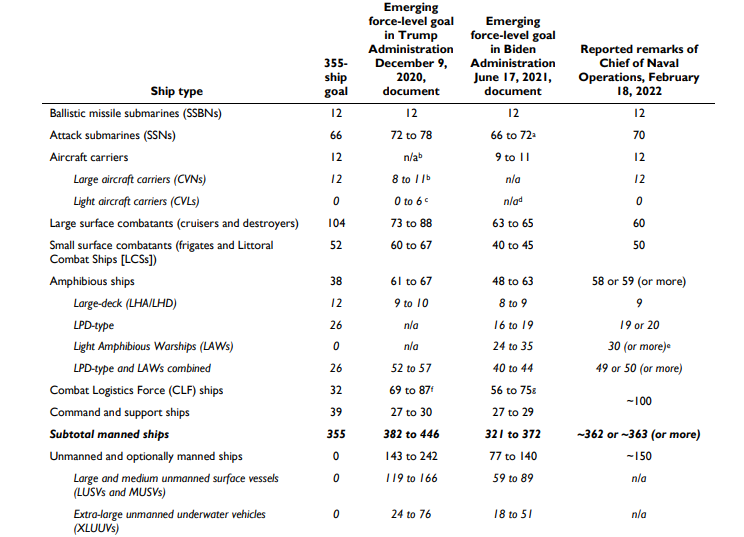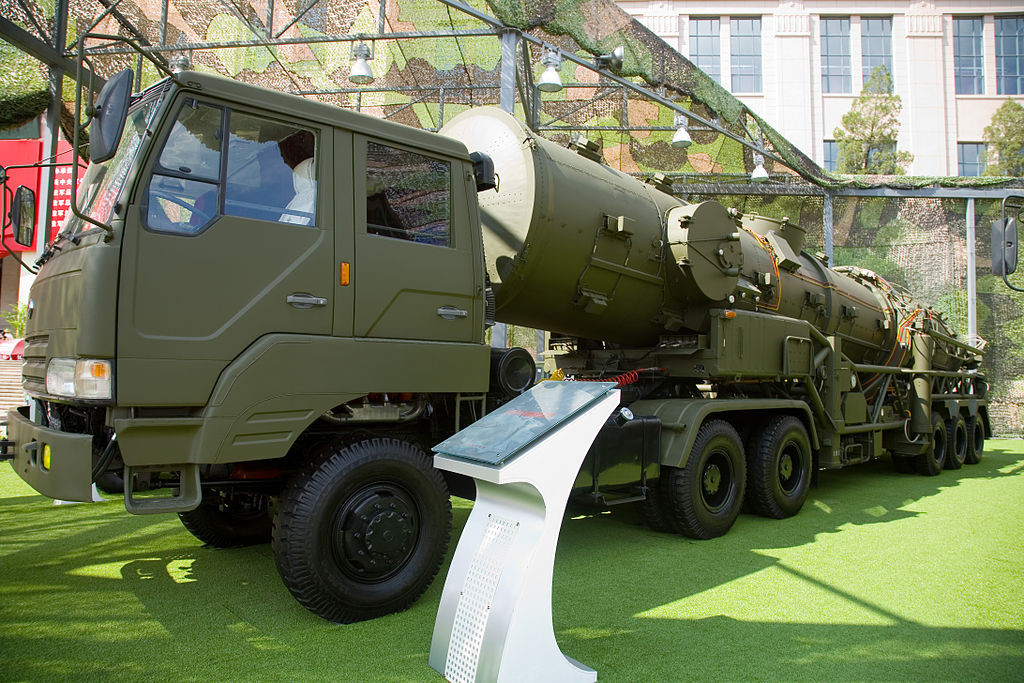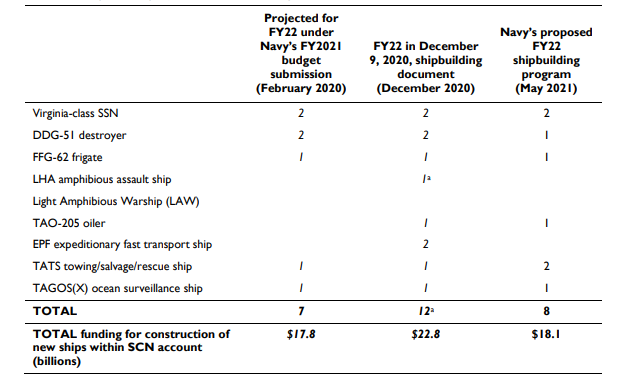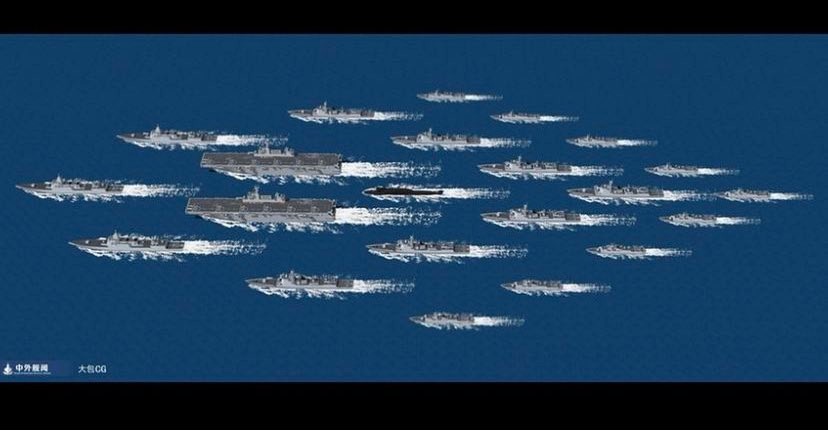In 2016, the United States Navy under President Donald Trump announced their ambitious goal of building and maintaining a 355-ship fleet to ensure U.S. Naval dominance in the face of rising peer threats, namely the People’s Liberation Army Navy (PLAN). The PLAN currently has about 355 ships and is planning to maintain a fleet of 460 ships by 2030. However, since the election of President Joe Biden and changes in U.S. Naval leadership, the 355-ship goal has shifted.

2020, Table A-1 on page 10.
Distributed Fleet Architecture
Since 2019, U.S. Navy and Department of Defense (DoD) leadership have recognized the rising vulnerability of large surface combatant task forces. As a result, they developed the successor to the 2016 355 ship plan, which, in their opinion, focused more on sheer tonnage and firepower than survivability and lethality. Now, the goal is to introduce a new distributed fleet architecture featuring a smaller proportion of large ships, a larger proportion of small ships, and a new third tier of large unmanned vehicles (UVs).

The most significant difference between the 355 Ship Plan and the Distributed Fleet Architecture is the reliance on large and medium unmanned surface vessels (LUSVs and MUSVs) and extra-large unmanned underwater vehicles (XLUUVs). U.S. Navy leadership is hoping that these unmanned ships can act as “missile trucks” and absorb anti-ship missile strikes in order to ensure larger manned combatants. These larger ships would act as “mother ships” to the unmanned vessels while also serving as traditional aircraft and troop-carrying assets.

Shelbourne, “CNO Gilday: ‘We Need a Naval Force of Over 500 Ships,’” USNI News, February 18, 2022; Justin
Katz, “CNO Lays Out Future Fleet He Wants: 500 ships, 12 Carriers, 150 Unmanned Vessels,” Breaking Defense,
February 18, 2022.
The Threat That Inspires Change
The purpose of Distributed Fleet Architecture and Distributed Maritime Operations is to geographically separate ships and their unique capabilities so that a handful of precision strikes cannot destroy entire task forces or reduce their combat power to irrelevance in a peer fight.

This new architecture has been inspired primarily by the rising capability of the PLAN and the Peoples Liberation Army Rocket Force (PLARF) which boast long-range Anti-Ship Ballistic Missiles such as the DF-21. The DF-21 sometimes referred to as a “Carrier-Killer” boasts a 1500-mile range and 600kg warhead that has been reported to be capable of sinking a U.S. carrier in a single hit. In 2019 the distribution of this weapon throughout the PLAARF prompted the United States Navy to move a majority of its Ballistic Missile Defense (BMD) to the Pacific theater, along with advanced SM-3 BMD missiles which are more capable of engaging the DF-21 on re-entry than the legacy SM-3.
So How Will They Do It?
The U.S. Navy’s FY2022 budget calls for the construction of eight new ships: two Virginia-class attack submarines (SSNs); one Arleigh Burke (DDG-51) class destroyer; one
Constellation (FFG-62) class frigate; one John Lewis (TAO-205) class oiler; two TATS towing, salvage, and rescue ships; and one TAGOS(X) ocean surveillance ship. The total of eight new ships is two fewer than necessary to maintain a steady-state replacement rate for a 355-ship Navy (which is about 10 ships per year). In essence, current budgetary constraints do not allow for the U.S. Navy to even get to 355 ships, let alone achieve the CNO’s ambitious goal of an additional 150 unmanned ships.

9, 2020, shipbuilding document. SCN is the Shipbuilding and Conversion, Navy, appropriation account (i.e., the
Navy’s shipbuilding budget, which includes funding for both construction of new ships and other activities.
It is worth noting that in 2021 the Peoples Liberation Army Navy commissioned 22 vessels, bringing their total number of front-line ships to 355. On the other hand, the United States only commissioned 7 vessels that year, bringing the US fleet total to 296. This trend is not favoring the United States as the PLAN continues to build amphibious assault vessels and more advanced aircraft carriers, all designed to operate under the protective umbrella of their “carrier killer” DF-21 missiles.

2x Type 075 LHD
3x Type 055 Stealth Guided Missile Destroyers
7x Type 052D Guided Missile Destroyers
9x Type 056A Corvettes
1x Type 094A Ballistic Missile Submarines


